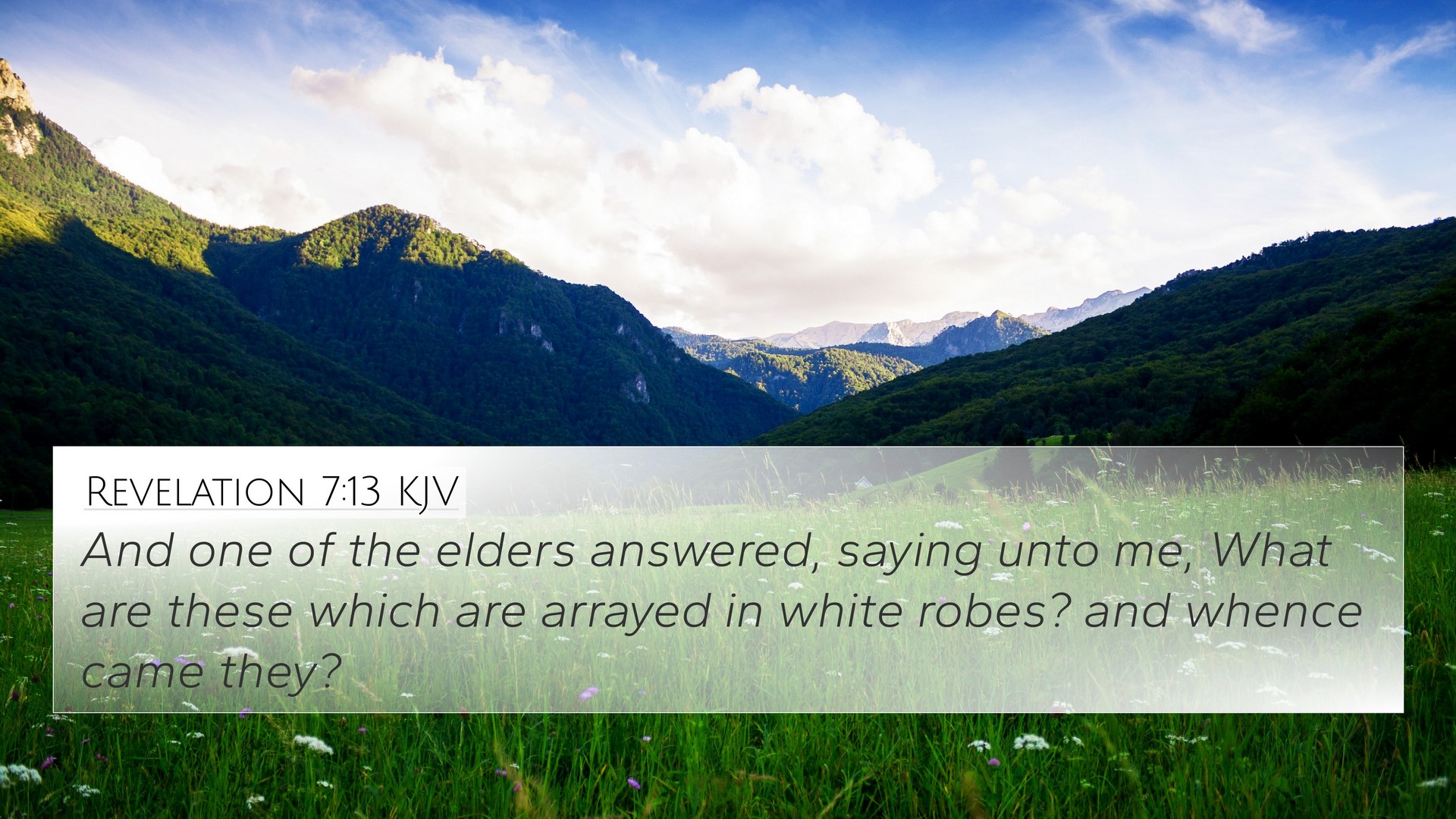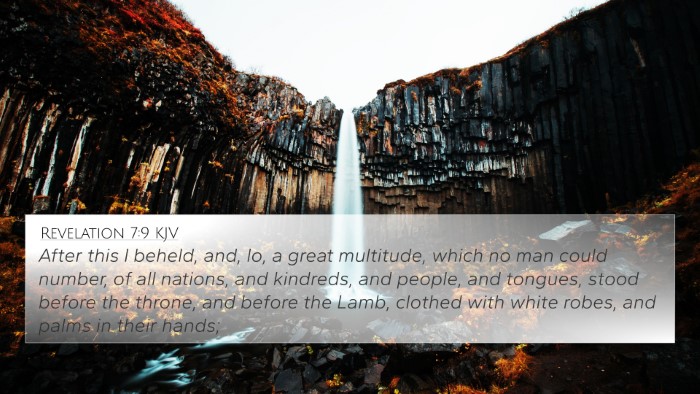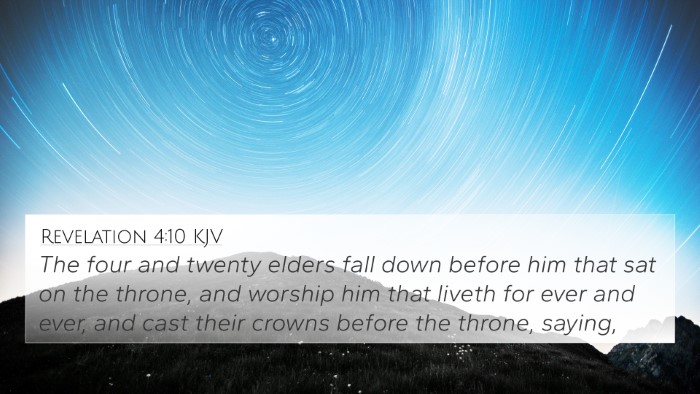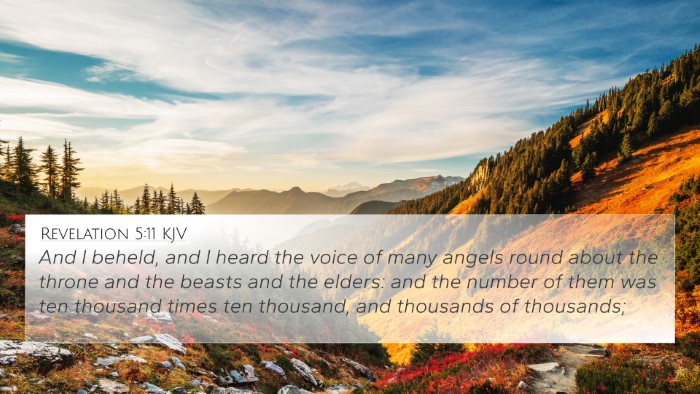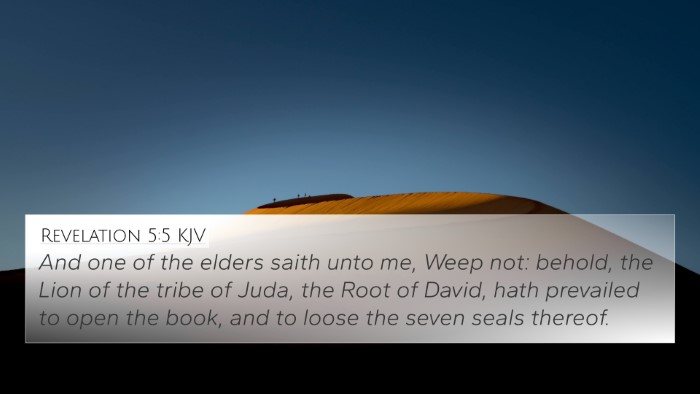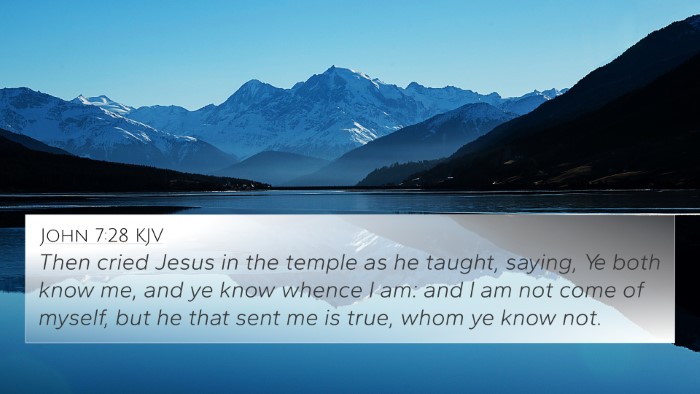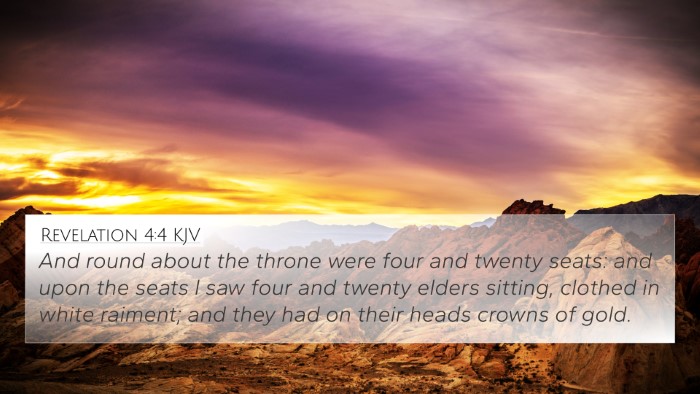Meaning of Revelation 7:13
Revelation 7:13 states: "Then one of the elders answered, saying to me, 'Who are these arrayed in white robes, and where did they come from?'" This verse addresses the elder's inquiry regarding the identity and origin of those in white robes, representing the redeemed saints. The imagery in this passage is rich and laden with significance, pointing to themes of salvation, purity, and divine protection.
Commentary Insights
According to Matthew Henry, this verse shows the concern of the elder to understand the redeemed. Henry notes that the white robes symbolize righteousness and the purity of the saints, highlighting their status as cleansed and sanctified by faith in Christ. This invites reflection on the transformative power of redemption and the call to be spiritually vigilant.
Albert Barnes expands on the significance of the question posed by the elder. He argues that the inquiry serves to emphasize the mysterious yet glorious nature of the saints, as well as the divine grace that has brought them into this position of honor. Barnes suggests that this moment is designed to celebrate the reality of salvation and to inspire hope among believers still facing trials on Earth.
Adam Clarke offers a practical interpretation by illustrating the importance of knowing the origins of these redeemed individuals. He notes that the phrase "where did they come from?" invites believers to consider their journey of faith and the trials endured for the sake of their witness. Clarke stresses that understanding this context encourages believers in their present struggles and assures them of eventual victory through Christ.
Thematic Bible Verse Connections
-
Revelation 3:5 - "He who overcomes shall be clothed in white garments..."
This verse highlights the promise of being clothed in righteousness, similar to the saints in Revelation 7:13.
-
2 Corinthians 5:3 - "If indeed, having been clothed, we shall not be found naked."
This parallels the theme of spiritual readiness and the assurance of salvation.
-
Matthew 22:11-12 - "But when the king came in to see the guests, he saw a man there who did not have on a wedding garment."
This story emphasizes the necessity of being appropriately attired for divine acceptance.
-
1 John 3:2 - "But we know that when He is revealed, we shall be like Him, for we shall see Him as He is."
This supports the transformative aspect of salvation, akin to the righteous ones in white robes.
-
Revelation 7:9 - "After these things I looked, and behold, a great multitude..."
Connects to the larger context regarding the multitude of saints being redeemed.
-
Isaiah 61:10 - "I will greatly rejoice in the Lord, my soul shall be joyful in my God; for He has clothed me with the garments of salvation."
This, too, speaks about divine garments symbolizing salvation and joy.
-
Philippians 3:20-21 - "For our citizenship is in heaven, from which we also eagerly wait for the Savior..."
This emphasizes the believers' heavenly calling and hope of glorification.
Cross-Referencing Biblical Texts
By examining Revelation 7:13 in context and alongside these cross-references, a clearer understanding of its implications and themes emerges. The verse serves as a reminder of the identity and hope that believers possess in Christ, fostering a sense of community among the faithful even amid trials.
Tools for Bible Cross-Referencing
To deepen understanding, readers can use various resources such as a bible concordance or a bible cross-reference guide. These tools facilitate connections between scriptures and enhance one's bible study experience, providing a framework for exploring intertextual themes.
How to Use Bible Cross-References
Engaging with cross-references not only aids in finding connections between Bible verses but also enriches study sessions and sermon preparations. Understanding the thematic Bible verse connections can bring fresh insights into the scriptures, revealing intertwinements that span both the Old and New Testaments.
Conclusion
In summary, Revelation 7:13 serves as a poignant reminder of the hope and sanctification found in Christ. By applying tools such as bible cross-reference systems and incorporating comparative Bible verse analysis, believers can uncover deeper meanings and foster a more profound relationship with the Word of God.
